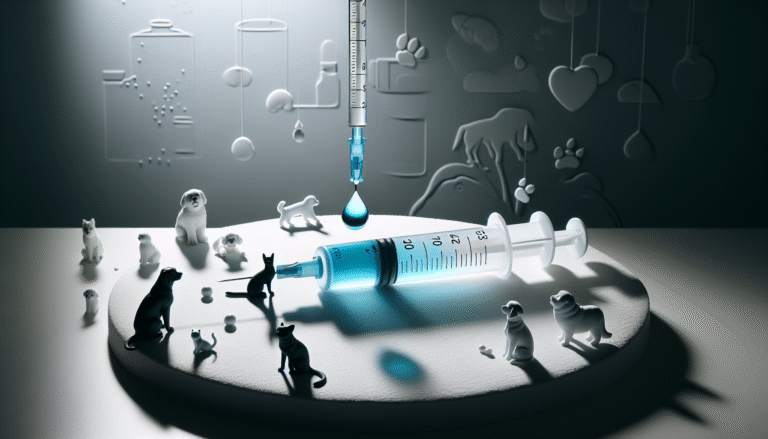Have you ever wondered about the hidden dangers that lurk in the environment around us? It’s surprising how something as seemingly innocuous as playing outdoors can expose us to serious health risks. Recently, two alarming cases have raised awareness about a particular threat: a brain-eating parasite known as Baylisascaris procyonis. This article will discuss these cases, symptoms, treatment, and ways to prevent infections from this parasite.
Understanding Baylisascaris Procyonis
What is Baylisascaris Procyonis?
Baylisascaris procyonis is a roundworm found primarily in raccoons. It is transmitted through contact with raccoon feces (also known as raccoon latrines) and can infect a variety of animals, including domestic pets like dogs. When the eggs of this parasite are ingested by a host, they develop into larvae, which can migrate to various organs, including the brain, leading to severe neurological issues.
How Does Transmission Occur?
Transmission typically occurs when an individual comes into contact with contaminated soil or surfaces. This can happen through activities such as playing outside, gardening, or coming into direct contact with infected animals or their feces. Pet dogs can also become carriers, as they may come across raccoon feces in yards or parks and later expose humans to the parasite.
Recent Cases in Los Angeles
Overview of the Cases
Recently, two separate cases came to light in Los Angeles involving a 14-year-old boy and a 15-month-old toddler who contracted infections caused by Baylisascaris procyonis. Both cases shed light on the serious implications of this parasite and serve as a cautionary tale for families, especially those with children.
The Teenager’s Experience
In the case of the teenager, he began to exhibit concerning symptoms, such as confusion and an unsteady gait. These signs led to his hospitalization, where doctors conducted brain imaging and identified the infection. Fortunately, after receiving timely medical treatment, which included a course of medications known as albendazole and corticosteroids, he made a full recovery.
The Toddler’s Situation
Conversely, the toddler presented with symptoms of lethargy and motor weakness. Unfortunately, due to a delayed diagnosis and treatment, the toddler suffered lasting cognitive impairments. This underscores the importance of recognizing symptoms early on and seeking medical attention promptly.
Symptoms of Infection
Recognizing the symptoms of Baylisascaris procyonis infection is crucial. Early detection can be key to effective treatment. Below are some common symptoms associated with infections caused by this parasite:
Early Symptoms
- Fatigue: A persistent feeling of tiredness and lack of energy.
- Fever: A common sign of infection in the body.
- Nausea and Vomiting: Gastrointestinal symptoms may occur as the infection develops.
Neurological Symptoms
Infections can quickly escalate to neurological issues, which include:
- Confusion: Difficulty in thinking clearly or making decisions.
- Seizures: Sudden, uncontrolled electrical disturbances in the brain.
- Motor Weakness: Reduced strength and coordination, which can affect mobility.
- Cognitive Impairments: Problems with memory, attention, learning, and decision-making can emerge as the infection progresses.
Severe Outcomes
In very severe cases, infections can lead to coma or even death. This emphasizes the need for awareness and prevention measures.
Medical Response to Infection
Diagnosis and Treatment
If you suspect someone has been infected, seeking medical attention promptly is crucial. Health care professionals typically follow this pathway for diagnosis and treatment:
- Medical History: Assessment of symptoms and exposure history.
- Physical Examination: Doctors will conduct neurological exams to evaluate any deficits.
- Brain Imaging: MRI or CT scans may be utilized to check for inflammation or damage.
Once confirmed, treatment usually involves:
- Albendazole: An antiparasitic medication that targets the infection.
- Corticosteroids: To reduce inflammation in the brain.
Both individuals in the recent cases underwent a six-week treatment regimen focusing on these medications.
Importance of Early Intervention
The contrasting outcomes between the teenager and the toddler highlight the importance of early diagnosis and prompt treatment. While the teen made a full recovery, the toddler faced long-term impairments due to delayed action. Recognizing the symptoms early can significantly affect prognosis and recovery.
Prevention Measures
Family and Community Precautions
To protect yourself and your family from Baylisascaris procyonis infections, here are some essential prevention tips:
-
Awareness of Raccoon Presence: Be cautious in areas where raccoons are known to frequent, especially in urban settings where they might come into contact with human habitats.
-
Avoiding Contaminated Areas: Stay clear of soil or areas that may be contaminated with raccoon feces. This includes public parks and areas close to wooded regions.
-
Pet Management:
- Regularly check your dogs for any signs of illness.
- Ensure pets do not have access to raccoon feces or areas where they might encounter such contamination.
- If your dog has been in a potentially contaminated area, wash its paws and coat thoroughly before allowing it indoors.
-
Educate Children: Teach your children about the importance of hygiene, especially when playing outdoors. Encourage them to wash their hands after playing outside and before eating.
Specific Guidelines for Families
It’s especially critical to keep young children safe because they tend to play in dirt and may inadvertently come into contact with contaminated materials. Here’s how families can ensure a safer environment:
| Precaution | Recommendations |
|---|---|
| Outdoor Play | Supervise children during outdoor activities. Limit play in areas known to attract raccoons. |
| Sandboxes | Cover sandboxes when not in use to prevent animal contamination. |
| Pet Care | Schedule regular vet check-ups and worming for dogs and cats. |
| Gardening and Yards | Use gloves when handling soil and wash hands after gardening. |
Conclusion
Understanding the risks associated with Baylisascaris procyonis can empower you and your family to take proactive steps towards prevention. The recent cases of the teenager and toddler in Los Angeles highlight the serious consequences that can arise from this parasite.
By recognizing the symptoms, seeking timely medical intervention, and following simple prevention measures, you can significantly reduce the risk of infection. It is always advisable to stay informed about local wildlife and maintain good hygiene practices, especially when children are involved. Keeping your family safe while enjoying the outdoors is both achievable and essential.



